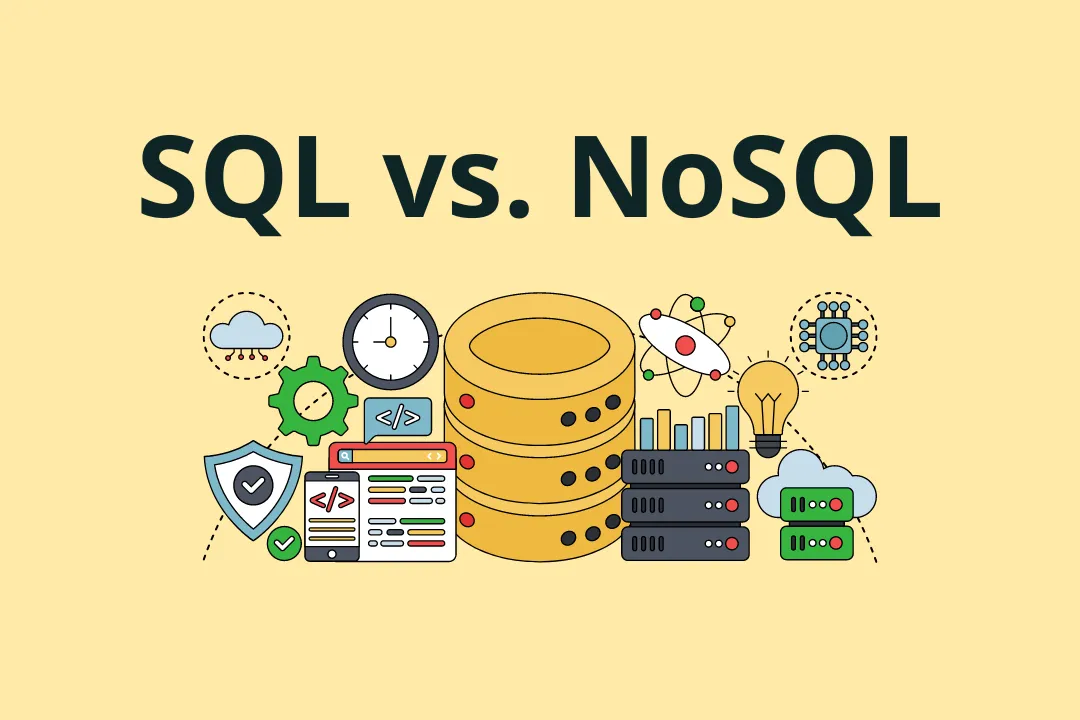In the realm of database management systems, two prominent categories stand out: SQL (Structured Query Language) and NoSQL (Not Only SQL). Each offers distinct advantages and is suited to different types of applications. Understanding the differences between them is crucial for making informed decisions when building software solutions. In this blog post, we’ll explore the characteristics, use cases, and examples of both SQL and NoSQL databases to help you choose the right one for your application.
SQL Databases:
SQL databases are known for their structured data storage, strong consistency, and support for complex queries. Here are some key features and examples of SQL databases:
- Feature Highlights:
- Structured Data: SQL databases store data in tables with predefined schemas, enforcing structure and consistency.
- ACID Compliance: They adhere to ACID (Atomicity, Consistency, Isolation, Durability) properties, ensuring data integrity.
- Transactions: SQL databases support transactions, allowing multiple operations to be grouped and executed atomically.
- Examples:
- MySQL: Widely used for web applications, MySQL offers reliability, scalability, and ease of use.
- PostgreSQL: Known for its advanced features and support for complex queries, PostgreSQL is popular in financial systems and data warehousing.
- Oracle Database: A commercial RDBMS, Oracle Database is known for its scalability and comprehensive feature set, making it suitable for enterprise applications.
NoSQL Databases:
NoSQL databases, on the other hand, offer flexibility, scalability, and high performance for handling unstructured or semi-structured data. Here are the key features and examples of NoSQL databases:
- Feature Highlights:
- Flexible Data Models: NoSQL databases have flexible schemas or are schema-less, allowing for the storage of various types of data.
- Horizontal Scalability: They are designed to scale horizontally, enabling seamless expansion across multiple nodes.
- Variety of Data Models: NoSQL databases support different data models like key-value stores, document stores, column-family stores, and graph databases.
- Examples:
- MongoDB: A popular document-oriented NoSQL database, MongoDB is widely used for content management systems, real-time analytics, and mobile applications.
- Cassandra: Known for its high availability and fault tolerance, Cassandra is suitable for IoT platforms and time-series data storage.
- Redis: An in-memory key-value store, Redis is often used for caching, real-time analytics, and session management in web applications.
- Neo4j: A graph database optimized for storing and querying graph data structures, Neo4j is ideal for applications involving complex relationships and network analysis.
| Feature | SQL | NoSQL |
|---|---|---|
| Data Structure | Tabular with predefined schema | Flexible schema or schema-less |
| ACID Compliance | Yes | Not always (depends on the database) |
| Transactions | Supported | Not always (depends on the database) |
| Scalability | Typically vertical scaling | Designed for horizontal scaling |
| Data Models | Relational | Various: key-value, document, column-family, graph, etc. |
| Use Cases | – Complex queries – Structured data – Applications requiring ACID compliance | – Big data analytics – Real-time analytics – Unstructured or semi-structured data – High scalability needs |
Choosing the Right Database:
When deciding between SQL and NoSQL databases, consider the specific requirements and characteristics of your application:
- Structured vs. Unstructured Data: If your data has a fixed schema and requires complex querying, SQL databases may be the right choice. For flexible schema and handling unstructured data, NoSQL databases are preferable.
- Scalability and Performance: NoSQL databases excel in horizontal scalability and high performance, making them suitable for applications with growing data volumes and demanding workloads.
- Data Integrity and Transactions: If your application requires strict data integrity and support for transactions, SQL databases are the way to go.
References:
- “MySQL.” Oracle. https://www.mysql.com/
- “PostgreSQL.” PostgreSQL. https://www.postgresql.org/
- “Oracle Database.” Oracle. https://www.oracle.com/database/
- “MongoDB.” MongoDB. https://www.mongodb.com/
- “Apache Cassandra.” Apache Cassandra. https://cassandra.apache.org/
- “Redis.” Redis. https://redis.io/
- “Neo4j.” Neo4j. https://neo4j.com/
In conclusion, both SQL and NoSQL databases offer unique advantages and are suited to different use cases. By understanding their characteristics and evaluating your application’s requirements, you can make an informed decision to choose the right database for your project’s success.
